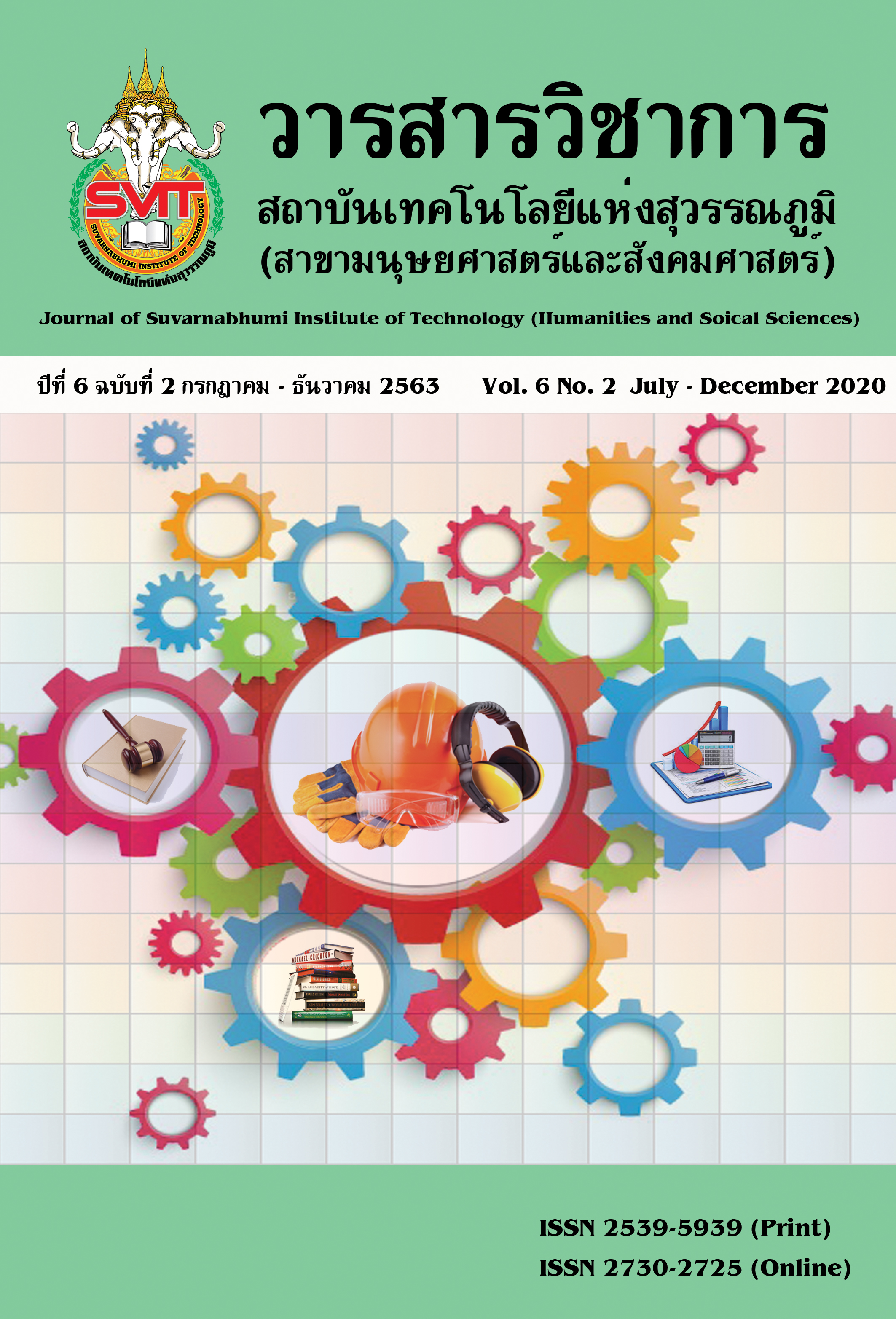EXTRACURRICULAR ACTIVITIES FOR DEVELOPING LEARNERS’ QUALITY
Keywords:
Extracurricular activities, co – curricular activities, student qualityAbstract
Extracurricular activities are found at all levels of a school system. They are outside school curriculums. They include various activities such as debate, music, athletics, drama, student council, school clubs, and contests. They are conducted by students under teachers’ support. In general, extracurricular are voluntary, not mandatory. Functions of extracurricular activities are reinforce learning, supplementing coursework, integrating knowledge, and democratization. Extracurricular activities have important roles of students’ quality development – paralleling the school curriculums.
References
กระทรวงศึกษาธิการ. (2551). หลักสูตรแกนกลางการศึกษาขั้นพื้นฐานพุทธศักราช 2551. กรุงเทพฯ: ชุมนุมสหกรณ์แห่งประเทศไทย.
ราชกิจจานุเบกษา. (2560). รัฐธรรมนูญแห่งราชอาณาจักรไทย. เล่มที่ 134 ตอนที่ 40 ก. หน้า14. วันที่ 6 เมษายน 2560
สำนักงานกองทุนสนับสนุนการสร้างเสริมคุณภาพ. (2562). ปิดเทอมสร้างสรรค์โลกกว้างนอกห้องเรียน.จดหมายข่าวชุมชนคนรักสุขภาพฉบับสร้างสุข, 15(209), 4-13.
สำนักงานเลขาธิการสภาการศึกษา. (2560). แผนการศึกษาแห่งชาติ พ.ศ. 2560–2579. กรุงเทพฯ: บริษัทพริกหวานกราฟฟิค จำกัด
สำนักงานเลขาธิการสภาการศึกษา. (2562). มาตรฐานการศึกษาแห่งชาติ พ.ศ. 2561. กรุงเทพฯ: บริษัท 21เซ็นจูรี่ จำกัด
Barbieri, M. (2009). Extracurricular activities. New York, NY: St.Martin’s Press.
Cassel, R. N., Chow, P., Demoulin, D. F., & Reiger, R. C. (2000). Extracurricular involvement in High school produces honesty and fair play needed to prevent delinquency and Crime. Educational, 121, 247-251.
Crimson Education. (n.d). Top 7 benefits of extracurricular activities for high school students. Retrieved from https://www.crimsoneducation.org/uk/blog/benefits-of- extracurricular-activities.
Education Corner. (2019). Extracurricular activities. Retrieved from https://www.education corner.com/k12-extracurricular-activities.html.
Emmer, R. (2010a). Band. New York, NY: Rosen Publishing Group.
Emmer, R. (2010b). Cheerleading. New York, NY: Rosen Publishing Group.
Emmer, R. (2010c). Chorus. New York, NY: Rosen Publishing Group.
Emmer, R. (2010d). Community service. New York , NY: Rosen Publishing Group.
Emmer, R. (2010e). Drama club. New York, NY: Rosen Publishing Group.
Emmer, R. (2010f). School newspaper. New York, NY: Rosen Publishing Group.
Foster, C.R. (2008). Extracurricular activities in the high school. New York, NY: Read Books.
Garcia, M. A. (2012). The impact of external employment on 12th grade student participation
In extracurricular activities as a Function of school size. American Secondary Education, 40(3), 45-58.
Hill, S. (2008). Afterschool matters: Creative programs that connect youth development and
Student achievement. Thousand Oaks, CA: Corwin Press.
Holloway, John HJ. (1999). Extracurricular Activities: The Path to Academic Success. Educational Leadership, 57(4), 87–88.
Jones, H. W. (2011). A high school experiment in extracurricular student activities. Bayonne,
NJ: General Books.
Larson, R. (2006). Organized activities as contexts for development: Extracurricular activities,
after-school and community programs. Mahwah, NJ: Lawrence
Lawhorn, B. (2008-2009). Extracurricular Activites. Occupational Outlook Quarterly. Winter, 16–21.
Lunenburg, F. C., & Ornstein, A. O. (2008). Educational administration: Concepts and practices (5th ed). Belment, CA: Wadsworth/ Cengage Learning.
Marsh, H. & Kleitman, S. (2003). School athletic participation: Mostly gain with little pain. Journal of Sport and Exercise Psychology, 25(2), 205-228.
McCarthy, Kevin, J. (2000). The effects of student activity participation, gender, ethnicity, and
Socio-economic level on high school student grade point averages and attendance. NationalAssociation of African American Studies & National Association of Hispanic and LatinoStudies. February, 410-424.
McNeal, R. B. (1998). High school extracurricular activities: ‘Closed’ structures and stratifying Patterns of participation. Journal of Educational Research, 91(3), 183-91.
Mountain Height Academy. (2015). Why extracurricular activities are so important. Retrieved from. http://www.mountainheightsacademy.org/why-extracurricular-activities-are-so- important.
National Center of Educational Statistic (NCES). (2012). Students behaviours and after school activities. Retrieved from http://nces.ed.gov/pubs2012/2012046/chapter3asp
Tuner, S. (2010). The benefit of extracurricular activities in high school: Involvement enhances academic achievement and the way forward. Academic Leadership, 8(3), 1-10.
Wilson, N. L. (2009). Impacts of extracurricular activities on students. Master of Science in School Counseling University of Wisconsin-Stout, University of Wisconsin-Stout, Menomonie, WI.
Downloads
Published
Issue
Section
License
บทความที่ได้รับการตีพิมพ์เป็นลิขสิทธิ์ของวารสารวิชาการ สถาบันเทคโนโลยีแห่งสุวรรณภูมิ
ข้อความที่ปรากฏในบทความแต่ละเรื่องในวารสารวิชาการเล่มนี้เป็นความคิดเห็นส่วนตัวของผู้เขียนแต่ละท่านไม่เกี่ยวข้องกับสถาบันเทคโนโลยีแห่งสุวรรณภูมิ และคณาจารย์ท่านอื่นๆในสถาบันฯ แต่อย่างใด ความรับผิดชอบองค์ประกอบทั้งหมดของบทความแต่ละเรื่องเป็นของผู้เขียนแต่ละท่าน หากมีความผิดพลาดใดๆ ผู้เขียนแต่ละท่านจะรับผิดชอบบทความของตนเองแต่ผู้เดียว





